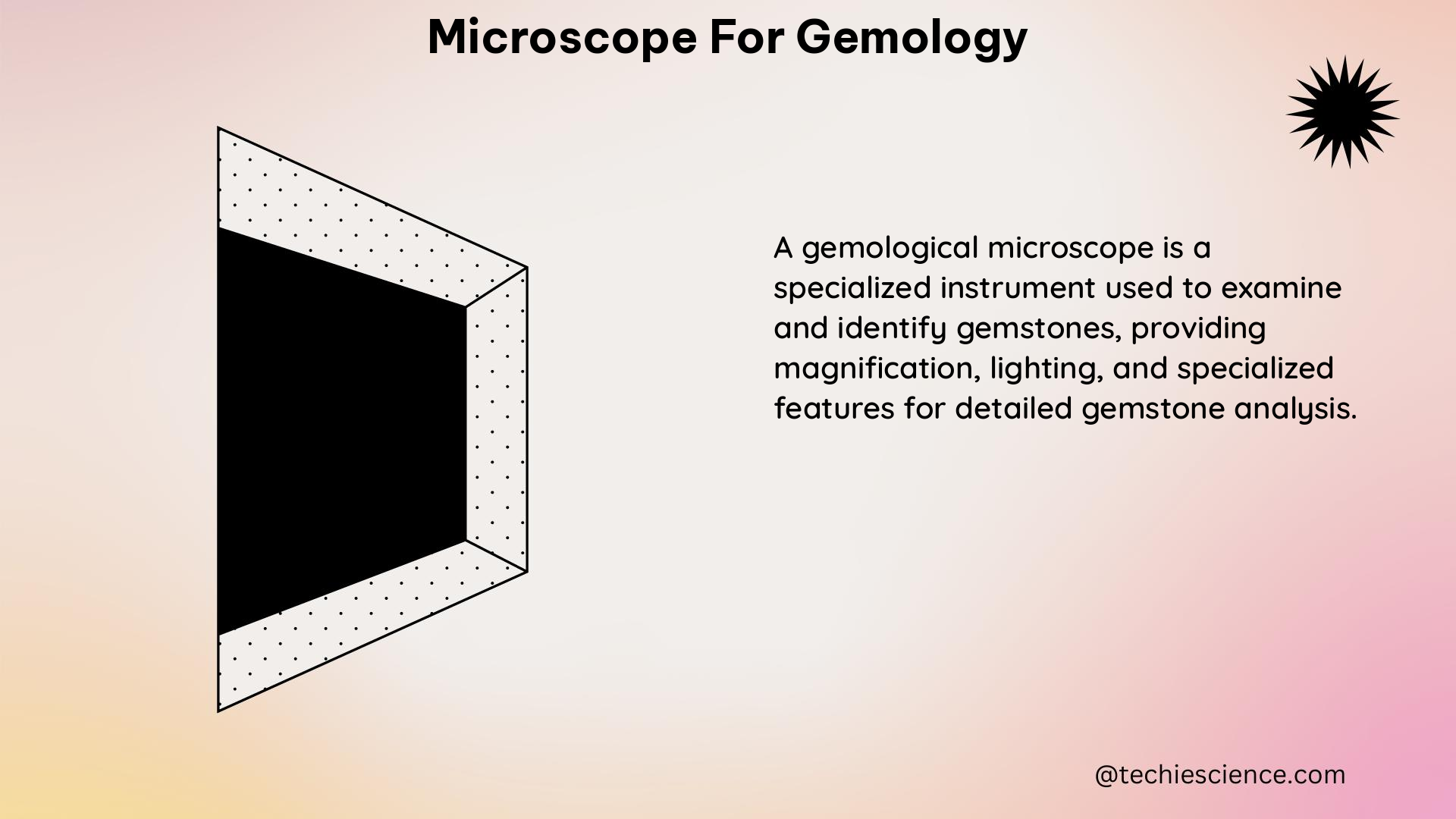Microscopes are indispensable tools in the field of gemology, enabling the detailed observation and analysis of the physical properties and characteristics of gemstones. When selecting a microscope for gemological applications, there are several critical factors to consider, including magnification, lighting, resolution, and advanced features that enhance the gemologist’s ability to examine and study these precious materials.
Magnification: The Key to Gemstone Observation
Magnification is one of the most crucial aspects of a gemology microscope. An ideal instrument should offer a range of magnification options, typically spanning from 10X to 80X. These different magnification levels allow gemologists to closely examine the intricate details of gemstones, such as inclusions, surface features, and other distinguishing characteristics.
| Magnification | Resolution |
|---|---|
| 10X | ~2 microns |
| 30X | ~0.67 microns |
| 40X | ~0.5 microns |
| 80X | ~0.25 microns |
The higher the magnification, the finer the details that can be observed, enabling gemologists to make more accurate identifications and assessments of the gemstones under examination.
Lighting: Revealing the Gemstone’s Secrets

Proper lighting is another critical factor in gemology microscopy. An ideal microscope should offer both substage (from below the object) and incident (from the side and above the object) lighting. This versatile lighting setup allows gemologists to observe various features of gemstones, such as refractive indices, birefringence, and pleochroism, which are essential for identification and grading.
Resolution: Capturing the Finest Details
Resolution is a crucial consideration when selecting a microscope for gemology. A high-resolution microscope enables the observation of fine details within gemstones, which can be crucial for identifying inclusions, surface features, and other characteristics that aid in gemstone identification and analysis.
The resolution of a microscope is determined by the numerical aperture (NA) of the objective lens, the wavelength of the light used, and the quality of the optics. The formula for calculating the resolution (R) is:
Resolution (R) = λ / (2 * NA)
Where:
– λ is the wavelength of the light used
– NA is the numerical aperture of the objective lens
For example, if a microscope uses light with a wavelength of 550 nm and has an objective lens with a numerical aperture of 0.4, the resolution of the microscope can be calculated as:
R = 550 nm / (2 * 0.4) = 687.5 nm
In another example, a gemologist is using a microscope with an objective lens that has a numerical aperture of 0.6 and the microscope uses light with a wavelength of 500 nm. The resolution of this microscope can be calculated as:
R = 500 nm / (2 * 0.6) = 416.67 nm
As a general guideline, the higher the numerical aperture and the shorter the wavelength of the light used, the higher the resolution of the microscope.
Advanced Features for Gemology Microscopy
In addition to the core factors of magnification, lighting, and resolution, there are several advanced features that can enhance the capabilities of a gemology microscope:
-
Binocular Microscope: A binocular microscope provides depth perception, making it easier for gemologists to examine inclusions and other features within gemstones.
-
Darkfield Well: A darkfield well is useful for observing the internal features of gemstones without the need for immersion liquids, which can be time-consuming and potentially damaging to the specimen.
-
Image Acquisition and Analysis: When it comes to capturing and analyzing digital images of gemstones, it is essential to use lossless file formats, such as PNG or TIFF, to retain the original image information. Proper exposure time and techniques to correct for illumination and background variation can also improve the quality of the image analysis.
Conclusion
Selecting the right microscope for gemology is a crucial decision that can significantly impact the quality and accuracy of gemstone analysis. By considering the key factors of magnification, lighting, resolution, and advanced features, gemologists can choose a microscope that will enable them to explore the intricate world of gemstones with unparalleled precision and clarity.
References
- Quantifying microscopy images: top 10 tips for image acquisition, Carpenter-Singh Lab, Broad Institute of MIT and Harvard, 2017-06-15, https://carpenter-singh-lab.broadinstitute.org/blog/quantifying-microscopy-images-top-10-tips-for-image-acquisition
- Measurement and Characterization of the Effects of Blue Fluorescence on Diamond Appearance, GIA, Summer 2021, https://www.gia.edu/gems-gemology/summer-2021-measurement-and-characterization-of-the-effects-of-blue-fluorescence-on-diamond-appearance
- Gem Microscope Considerations, Ganoksin Jewelry Making, https://www.ganoksin.com/article/gem-microscope-considerations/
- A Look Inside the Microscopic World of Gems, ZEISS, 2021-01-21, https://www.zeiss.com/microscopy/en/resources/insights-hub/raw-materials/gemology-microscopy.html

The lambdageeks.com Core SME Team is a group of experienced subject matter experts from diverse scientific and technical fields including Physics, Chemistry, Technology,Electronics & Electrical Engineering, Automotive, Mechanical Engineering. Our team collaborates to create high-quality, well-researched articles on a wide range of science and technology topics for the lambdageeks.com website.
All Our Senior SME are having more than 7 Years of experience in the respective fields . They are either Working Industry Professionals or assocaited With different Universities. Refer Our Authors Page to get to know About our Core SMEs.